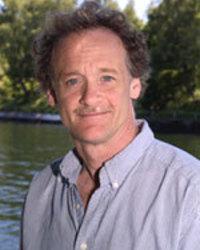event
Untangling Natural and Anthropogenic Climate Signals, with Implications for the PDO and AMO
Primary tabs
EAS Fall 2018 Seminar Series Presents: Dr. David Battisti, University of Washington
Untangling Natural and Anthropogenic Climate Signals, with Implications for the PDO and AMO
We introduce a novel method to separate modes of internal variability from global warming based on differences in timescale and spatial pattern, without relying on climate models.
We identify uncorrelated components of Pacific sea-surface temperature (SST) variability due to global warming, the Pacific Decadal Oscillation (PDO), and the El Nino-Southern Oscillation (ENSO).
Our results give statistical representations of PDO and ENSO that are consistent with there being separate processes, operating on different timescales, but are otherwise consistent with canonical definitions.
We isolate the multi-decadal variability of the PDO and find that it is confined to midlatitudes; tropical SSTs and their teleconnections mix in higher-frequency variability. Similarly, we find that the Atlantic Meridional Oscillation (AMO) is focused in the North Atlantic subpolar gyre, off the southern coast of Greenland.
Using climate models, we show that warm subpolar temperatures are associated with a strengthened Atlantic Meridional Overturning Circulation (AMOC) and local heat fluxes from the ocean into the atmosphere. Shifts in atmospheric circulations are an important influence on the intensification and subsequent weakening of AMOC and help to communicate the warming into the tropical Atlantic.
Status
- Workflow status: Published
- Created by: nlawson3
- Created: 08/01/2018
- Modified By: nlawson3
- Modified: 10/12/2018
Categories
Keywords
Target Audience

